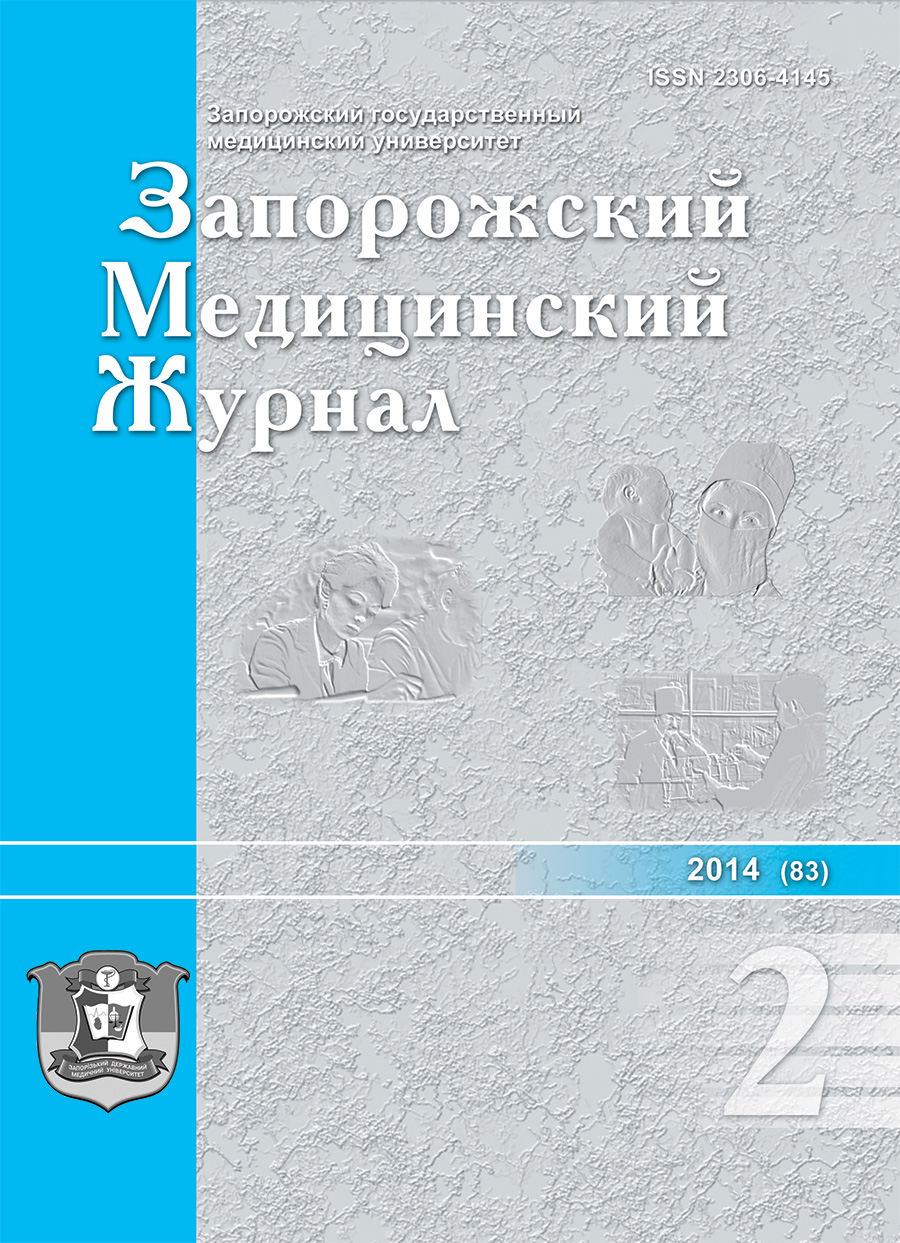Risk factors delivery of the newborns with distress
DOI:
https://doi.org/10.14739/2310-1210.2014.2.25427Keywords:
fetal distress, risk factors, infectionsAbstract
The final purpose of pregnancy and delivery is healthy newborn. 65% of fetus development takes place in the conditions of placenta hypoperfusion has an enhanceable risk of perinatal damages. Placenta dysfunction is the widest pregnancy pathology which varies from 24% to 46%.
The aim of the work: to investigate risk factors of the distress onset in newborns to prevent this complication.
Materials and methods: 142 case reports of delivery mothers and case reports of their newborns underwent retrospective analysis. All women were examined according to the protocols. State of newborns was assessed by Apgar scale. All infants with distress and their mothers were divided into 3 groups according randomized evaluation with Apgar scale. First group included 75 newborns with Apgar score on the first minute of 6-7 points, group II contained 46 neonates with an estimate of 4-5 points, group III consisted of 21 infants with points 3 or less. The control group included 20 infants without distress. There anamnestic, clinical-laboratory, histological and statistical methods were used in scientific work. The women’s age was from 16 to 42, the average age without reliable distinctions in all groups. The high percentage of extragenital pathology were noticed in all groups, which amounted to 36%, 45.65%, 71.45% in the comparison group - 85%. Traced deepening severity distress of increasing frequency of complications in labor: the group I childbirth complication rates were 40,00% in group II - 52,17%, in group III complication rates during labor were significantly higher - 71 and 43%, the control group it had only 15%.
The average scores of Apgar on the first minute amounted to 6,76±0,13 p., 4,70±0,21 p., 2,86±0,17 p. Children with severe distress recovered significantly more active. Apgar scores increased by 1.76 p. in the III group after five minutes (p<0.005) and was 4,57±0,23 p., II - at least 1,42 (6,12±0,18 p.), in the I group was only 0.38 p. (7,14±0,35 p.). Premature infants restored faster than full-term newborns. Apgar scores differed hardly in the control group on the first and fifth minute: 8,80±0,24 p. and 9,50 ± 0,26 p. The average weight of the babies in the I group was 3384,68±236,43 g, which was significantly higher (p<0.001) than in the II and III groups (2510,42±187,23 g, 2234,29 69,56 g, respectively) and significantly lower (p<0.05) rate control group (3852,50±196,38 g). Morphological changes in the placenta are most pronounced in severe distress - 85.71% purulent diffuse chorioamnionitis and detsiduitis with bleeding, premature the placenta aging.
Conclusions:
1. Risk factors for the development of fetal distress during labor are: extragenital pathology (42.96%), first childbirth (53.52%), complications of pregnancy (51.40%) (especially in the first and second trimesters, late gestosis), premature delivery (38.03%), complications during delivery (50.02%).
2. The severity of the fetus at birth corresponds to more pronounced changes in the placenta in the form of local and diffuse purulent chorioamnionitis and detsiduitis, indicating a chronic infectious process, dysfunction of the placenta can cause fetal weight at birth, violation of adaptive opportunities of a fetus during labor.
3. It is necessary to inspect more carefully women with infections, adequate treat revealed infections, supervise infected women in risk group of development of placentary insufficiency.
References
Antonov A.G. Reanimation and intensive therapy of the newborns with asphyxia. Attending physician 2006; №3; 80-83.
Feclin V.A., Kogemyaka A.N., Sirenko T.V. Diagnostics and treatment of diseases of respiratory organs at newborns with perinatal defeat of CNS when using modern medical technologies. Medical practice 2007; №1(55); 16-19.
Cherkasov N.S., Bahmutova L.A., Engibirin K.G., As2008. - № 3.- С 122-126hkamalova S.I. Damage of a myocardium at the newborns who have had a perinatal hypoxia. Russian messenger of a perinatology and pediatrics. 2005; №2; 50-51.
Podolsky V.V., Podolsky Vl.V., Sopko Ya.A. Modern possibilities of treatment of placentary insufficiency at pregnant women with infections of genitalias. Reproductive health of the woman. 2008; № 3; 122-126.
Downloads
How to Cite
Issue
Section
License
Authors who publish with this journal agree to the following terms:
Authors retain copyright and grant the journal right of first publication with the work simultaneously licensed under a Creative Commons Attribution License that allows others to share the work with an acknowledgement of the work's authorship and initial publication in this journal. 
Authors are able to enter into separate, additional contractual arrangements for the non-exclusive distribution of the journal's published version of the work (e.g., post it to an institutional repository or publish it in a book), with an acknowledgement of its initial publication in this journal.
Authors are permitted and encouraged to post their work online (e.g., in institutional repositories or on their website) prior to and during the submission process, as it can lead to productive exchanges, as well as earlier and greater citation of published work (See The Effect of Open Access)





